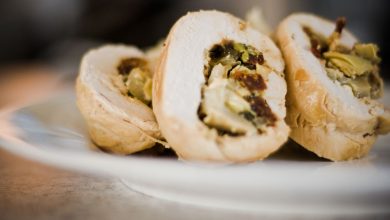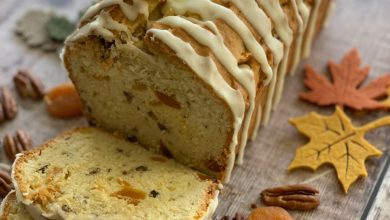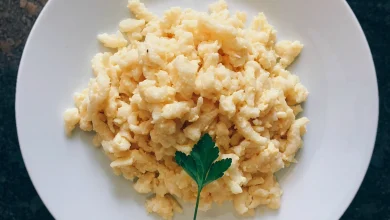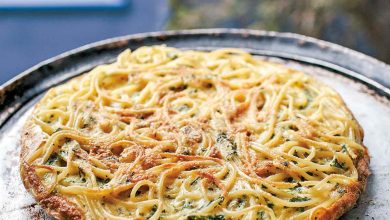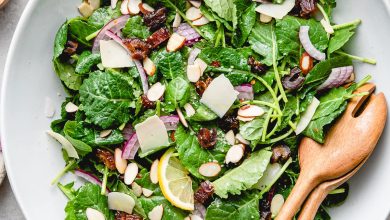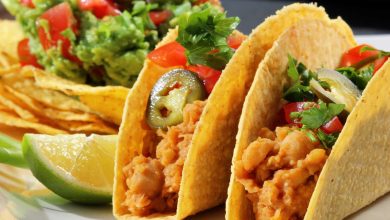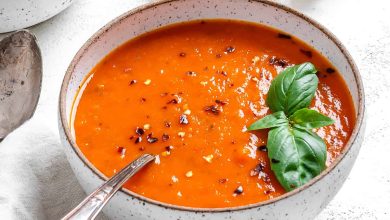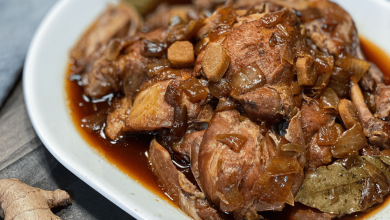SOBA NOODLE BOWL
Certainly! A Soba Noodle Bowl is a delicious and satisfying Japanese dish that consists of buckwheat noodles served in a flavorful broth, typically accompanied by various toppings and condiments. Let’s explore its history, components, preparation steps, and the time needed to make it.
History of Soba Noodle Bowl:
Soba noodles have a long history in Japan, dating back to the Edo period (17th to 19th centuries). They were initially made purely from buckwheat flour, which was a staple in Japan. Soba noodles were known for their simplicity and nutritional value. Over time, the dish evolved, and now you can find various styles of Soba Noodle Bowls with different broths and toppings.
Components of a Soba Noodle Bowl:
A traditional Soba Noodle Bowl typically consists of the following components:
-
Soba Noodles: These are thin noodles made from a mixture of buckwheat flour and wheat flour. They have a slightly nutty flavor and are typically served cold or hot.
-
Broth: The broth can vary but is often made from a combination of dashi (a Japanese stock made from fish and/or seaweed), soy sauce, mirin (a sweet rice wine), and other seasonings. Some variations include miso (soybean paste) for a heartier flavor.
-
Toppings: Common toppings include thinly sliced green onions, nori (seaweed), tempura flakes, kamaboko (fish cake), and grated daikon radish.
-
Condiments: You can customize your Soba Noodle Bowl with condiments like wasabi (Japanese horseradish), soy sauce, and sesame seeds.
Steps to Prepare a Soba Noodle Bowl:
Here’s a basic outline of how to prepare a simple Soba Noodle Bowl:
Ingredients:
- Soba noodles
- Broth ingredients (dashi, soy sauce, mirin, etc.)
- Toppings (green onions, nori, etc.)
- Condiments (wasabi, soy sauce, sesame seeds)
Preparation:
-
Cook the soba noodles according to the package instructions. Usually, they’re boiled for about 5-7 minutes until al dente, then rinsed under cold water to stop the cooking process.
-
Prepare the broth by heating dashi, soy sauce, mirin, and any additional seasonings of your choice in a pot. Simmer for a few minutes.
-
Arrange the cooked soba noodles in bowls.
-
Pour the hot broth over the noodles.
-
Add your choice of toppings, such as sliced green onions, nori strips, or tempura flakes.
-
Serve with condiments like wasabi, soy sauce, and sesame seeds on the side.
Time Needed to Prepare:
The time required to prepare a Soba Noodle Bowl can vary depending on your cooking experience and the complexity of the recipe. On average, it takes about 20-30 minutes to prepare a simple Soba Noodle Bowl. This includes cooking the noodles, preparing the broth, and assembling the toppings. More elaborate versions with homemade broths or additional toppings may take longer.
Enjoy your homemade Soba Noodle Bowl, and feel free to customize it to your taste preferences!
Certainly! Here are the nutrition facts and some health information for a basic Soba Noodle Bowl. Please keep in mind that the specific values may vary depending on the exact ingredients and portions used in your recipe.
Nutrition Facts for a Basic Soba Noodle Bowl:
-
Calories: A typical serving of Soba Noodle Bowl contains around 300-400 calories, but this can vary depending on portion size and ingredients.
-
Protein: Soba noodles are a source of plant-based protein, providing about 8-12 grams of protein per serving.
-
Carbohydrates: Soba noodles are primarily composed of carbohydrates. A serving typically contains 60-80 grams of carbohydrates.
-
Fiber: Soba noodles are a good source of dietary fiber, providing around 3-4 grams per serving.
-
Fat: Soba noodles are low in fat, with approximately 1-2 grams of fat per serving.
-
Sodium: The sodium content can vary depending on the broth and condiments used. On average, a serving may contain 800-1000 milligrams of sodium.
-
Vitamins and Minerals: Soba noodles contain essential nutrients like thiamin (vitamin B1), manganese, and magnesium.
Health Information:
-
Low in Fat: Soba noodles are naturally low in fat, making them a healthy choice for those looking to manage their fat intake.
-
Good Source of Protein: Soba noodles provide a moderate amount of plant-based protein, which can be beneficial for vegetarians and vegans.
-
Rich in Fiber: The dietary fiber in soba noodles can aid in digestion and help maintain a feeling of fullness, which may support weight management.
-
Gluten-Free Option: Soba noodles made solely from buckwheat flour are gluten-free, making them suitable for individuals with gluten sensitivities or celiac disease. However, some commercial soba noodles may contain wheat, so it’s essential to check the label if you have gluten concerns.
-
Sodium Consideration: Depending on the broth and condiments used, the sodium content in a Soba Noodle Bowl can be significant. If you’re watching your sodium intake, consider using low-sodium soy sauce or broth.
-
Customizable: You can make your Soba Noodle Bowl healthier by incorporating a variety of vegetables and lean proteins as toppings, increasing the nutrient content.
It’s essential to balance your Soba Noodle Bowl with a variety of vegetables and lean proteins to create a well-rounded, nutritious meal. Additionally, moderation in portion size can help you manage calorie intake while enjoying this delicious dish.

